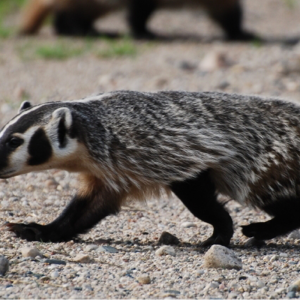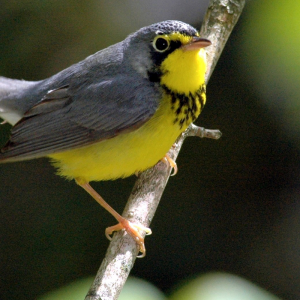Cougar de l’est
Vital Signs
Common name: Eastern Cougar
Latin name: Puma concolor couguar
Status under SARA: Data Deficient. In 1978, the eastern subspecies was declared endangered by COSEWIC assessment. The status was re-examined in 1998, and the animal was designated “data deficient” because there was not enough data to evaluate the status of the animal or its classification as a subspecies. The species has been declared extinct in the United States.
Range: Ontario, Quebec, New Brunswick, Nova Scotia
Life Span: Unknown, but possibly up to 21 years
Size: Male Cougars reach two metres in length and weigh over 100 kg. Females are slightly smaller.
Population Estimate: Unknown
The Facts
- Females have two to four kittens every two to three years in late winter or mid-summer. Cubs stay with their mothers for up to two years, learning the complicated hunting techniques of Cougars. Except for mothers and cubs, Cougars are usually shy and solitary.
- Kittens are spotted until they are six months old, afterward they grow the adult coat of plain short hair, dark to reddish or grayish brown with a white chest and belly. They have a long tail with a black tip and black markings on the backs of the ears and around the muzzle.
- Masters of camouflage, Cougars usually hunt at night and rarely chase their prey. A Cougar will locate its prey by scent or sound, slink forward slowly and silently, then pounce when the prey is within reach.
- Cougars are excellent swimmers and climbers.They can also jump more than six metres.
- Cougars’ favourite food is deer, but they also eat beavers, porcupines and other small mammals. Cougars travel long distances for food, often using the same routes and marking their territories with scratched scent posts.
- When hunting, Cougars typically kill their prey by suffocating them with a prolonged bite across the throat that eventually collapses the victim’s windpipe. This is usually the case with large prey like Moose calves and Elk. Small prey, such as Mule Deer fawns, are more likely to die from a broken neck caused by a single bite. In order to hide its kill from scavengers, a Cougar will cover its victim with debris between feedings.
The Story
In the dense hardwood forests of eastern Canada, the Cougar prowls – or might prowl. It is uncertain whether there are any Eastern Cougars left in Canada. This beautiful wild cat is gravely endangered in the near north of eastern Canada, where it once traveled the rough, hilly and swampy lands surrounded by forest.
The Cougar is Canada’s largest and most powerful cat. Cougars were once found all over North America. They still survive in Western Canada but no one knows how many, if any, Eastern Cougars remain. Their range is thought to be the most extensive range of any terrestrial mammal in the western hemisphere – a range that is almost the same as that of the White-tailed Deer, the Cougar’s main prey.
These majestic creatures need large and undisturbed tracts of forest habitat. Consequently, their population has fallen as human development and disturbance has grown. Many people thought the animal was gone forever but, in the early 1970s and 1980s, many sightings were reported in Ontario, Quebec, Nova Scotia and New Brunswick (and south of the border in Maine, US). Several years passed without any further reports until 1993, when tracks and scat of a Cougar were found in New Brunswick. In 2006, several unconfirmed news reports of Cougar sightings keep the hope alive that a few Eastern Cougars might remain in our shrinking forests.
Cougars are found wherever there is enough prey, enough forest cover, and a minimum of human disturbance. Logging in the eastern forests, human settlement, and habitat disturbance from activities like mining are responsible for the sharp drop in Cougar populations. If the Eastern Cougar does still exist, it is possible the population may recover if deer populations increase and forests grow again on the existing logged land.
What Is Being Done
The Eastern Cougar has been declared extinct by the U.S. Fish and Wildlife Service. According to news reports, Scientists had held out hope, based on scattered reports, that a few Eastern Cougars remained. Those sightings turned out to be other subspecies from the Western United States, or captive animals that were freed or had escaped.
“The distribution of the Eastern Cougar in Canada and the validity of considering it a subspecies have been questioned. During the twentieth century, Cougars were reported in Ontario, Quebec, New Brunswick, and Nova Scotia, but some of the sightings proved to be encounters with Cougars from other areas that had escaped from captivity. There is no objective evidence (actual Cougar specimens or other unequivocal confirmation) of the continuous presence of Cougars in eastern Canada since the nineteenth century. For example, since that time, no Cougars have been reported killed in Ontario, and the one animal killed in Quebec, in 1992, had escaped from captivity.” (Hinterland Who’s Who)
Until there is confirmation that the Eastern Cougar still survives, no direct recovery actions will take place for this species. Cougars are protected from hunting and killing in Nova Scotia, New Brunswick and Ontario. Despite this, their population does not seem to have increased.
The deer population in New Brunswick is high enough to support 140-250 Cougars. However, logging, mining, and other activities have driven Cougars away in search of areas that are free from human disturbance. In order for the Eastern Cougar to survive, areas of land must be protected from human activity.
What You Can Do
- Report any Eastern Cougar sightings to the Canadian Wildlife Service and your provincial Department of Wildlife.
- Learn about the Cougar and share your knowledge with others to stimulate concern for this beautiful endangered animal.
- Reduce your use of paper and other forest products to lessen the pressure to log the remaining cougar habitat. Always recycle paper and cardboard, and buy recycled products wherever possible.
- Be aware of and question local development plans that could destroy Cougar habitat.


